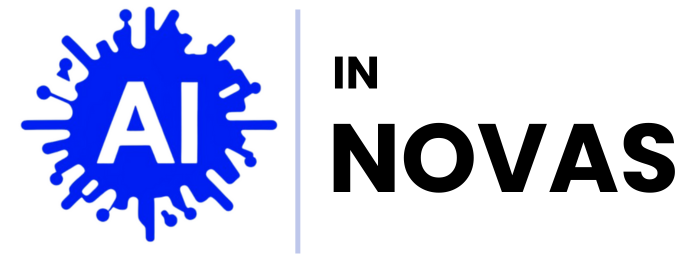In a world where speed and efficiency reign supreme, the need for seamless digital communication has never been greater. Enter the realm of e-signature solutions—powerful tools designed to streamline the signing process, reduce paperwork, and enhance collaboration. Two giants have emerged in this competitive landscape: DocuSign and Adobe Sign. Each boasts a unique blend of features, user experiences, and integrations that cater to diverse business needs. In this ultimate e-signature showdown, we’ll explore the strengths and weaknesses of these leading platforms, helping you navigate the complexities of digital agreements. Whether you’re a small business owner, a legal professional, or part of a large enterprise, understanding the nuances of DocuSign and Adobe Sign is crucial for making informed decisions in today’s fast-paced digital environment. Join us as we delve into this head-to-head comparison and uncover which solution might be the key to unlocking streamlined efficiency for you and your organization.
Key Features and Functionalities in the E-Signature Arena
The e-signature landscape is continually evolving, with leading platforms like DocuSign and Adobe Sign offering a wealth of features designed to streamline document signing processes. Both services provide robust security measures, ensuring that your signed documents are not only legally binding but also protected against tampering. Users benefit from comprehensive audit trails, which keep detailed records of every action taken on a document. This accountability is essential for businesses and individuals looking to maintain compliance with various legal standards.
Moreover, these platforms boast an intuitive user interface that enhances accessibility and ease of use. Key functionalities include:
- Mobile Compatibility: Sign documents on the go with dedicated mobile apps.
- Template Creation: Save time with reusable templates for frequently used documents.
- Integration Options: Seamlessly connect with popular tools such as CRM systems and cloud storage services.
To give a better perspective, here’s a comparative overview of both platforms’ standout features:
| Feature | DocuSign | Adobe Sign |
|---|---|---|
| Multi-Language Support | ✔️ | ✔️ |
| Offline Signing | ✔️ | ✖️ |
| In-Person Signing | ✔️ | ✔️ |
| Advanced Authentication | ✔️ | ✔️ |

User Experience and Interface: A Comparative Analysis
When it comes to user experience, both DocuSign and Adobe Sign have crafted their platforms with the end-user in mind, yet they achieve distinctiveness in their approaches. DocuSign offers a straightforward, intuitive interface that guides users through the e-signature process with minimal friction. Its dashboard is cleanly organized, enabling users to quickly access features such as sending documents, managing templates, and reviewing transactional histories. Visual indicators signal the status of documents, enhancing clarity and reducing any possible confusion. Alternatively, Adobe Sign integrates seamlessly with the Adobe ecosystem, appealing particularly to those already accustomed to tools like Photoshop or Illustrator. Its interface supports a more visually rich experience, with a comprehensive layer of customization options that caters to brands seeking an aesthetic touch in their documentation processes.
In terms of navigation and responsiveness, both platforms stand out but excel in different areas. DocuSign boasts a mobile-friendly design that ensures a consistent experience across devices, making it easy for users to manage their documents on the go. Adobe Sign, however, offers robust features that can become overwhelming for new users due to its depth of options. While experienced users appreciate the granularity in functionalities such as conditional logic and advanced workflows, new users may initially feel lost. Below is a table outlining key aspects of user experience for both platforms:
| Feature | DocuSign | Adobe Sign |
|---|---|---|
| Ease of Use | High | Moderate |
| Mobile Accessibility | Excellent | Good |
| Customization Options | Limited | Extensive |
| Integration with Other Tools | Strong | Very Strong |

Security Measures and Compliance Standards Reviewed
When it comes to e-signature solutions, ensuring the security of sensitive information is paramount. Both DocuSign and Adobe Sign employ a robust set of security measures to protect user data. These platforms utilize encryption standards such as AES-256 and TLS to safeguard documents during transmission and storage. Additionally, they offer multi-factor authentication options, ensuring that only authorized users can access critical data. Here’s a quick comparison of the security protocols implemented:
| Security Feature | DocuSign | Adobe Sign |
|---|---|---|
| Encryption | AES-256, TLS | AES-256, TLS |
| Multi-Factor Authentication | Yes | Yes |
| Audit Trail | Comprehensive | Comprehensive |
| Data Residency | Global options | Global options |
Compliance with industry standards further reinforces the credibility of both services. DocuSign is compliant with regulations such as HIPAA, GDPR, and ISO 27001, making it suitable for industries that deal with sensitive medical and personal data. Adobe Sign also adheres to similar compliance guidelines, along with integration capabilities that facilitate adherence to organizational policies. By providing detailed audit trails and ensuring data residency, both platforms empower users to confidently manage their document workflows while meeting legal requirements in their respective jurisdictions.

Cost-Effectiveness and Value for Your Business Needs
When evaluating the impact of e-signature solutions on your organization’s bottom line, both DocuSign and Adobe Sign present compelling arguments for consideration. DocuSign often takes the lead with its flexible pricing tiers that adapt to different business sizes and user demands. With plans starting at competitively low prices and a comprehensive feature set, it remains a favorite for startups and small businesses looking to scale their operations without incurring exorbitant expenses. Conversely, Adobe Sign integrates seamlessly into Adobe’s ecosystem, which can provide substantial value for companies already utilizing Adobe products. This integration reduces additional training costs and improves workflow efficiency across teams.
When comparing features side by side, the distinction in cost-effectiveness becomes clearer. Both platforms offer a variety of functionalities, but the pricing models differ significantly. Consider the following table showcasing key aspects of each solution:
| Feature | DocuSign | Adobe Sign |
|---|---|---|
| Starting Price | ++$10/month | ++$29.99/month |
| User Management | Basic features | Advanced options |
| Storage Options | Limited cloud space | Integration with Document Cloud |
| Mobile Support | Robust mobile app | Responsive design |
Ultimately, the decision of which e-signature tool delivers more value hinges on how well each service meets your specific business needs. For businesses that require advanced integrations and have already invested in Adobe’s suite, the higher initial cost of Adobe Sign may offer long-term savings through improved efficiency. On the other hand, DocuSign’s affordability and straightforward payment structure can appeal to those who prioritize budget over extensive features. Evaluating these factors in conjunction with your current operations will help determine the most cost-effective solution for your business.
Future Outlook
As we conclude our deep dive into the e-signature landscape, it’s clear that both DocuSign and Adobe Sign bring their unique strengths to the table, catering to a diverse range of needs and preferences. Whether you prioritize user experience, advanced integrations, or robust security features, the choice ultimately hinges on what aligns best with your organization’s goals. In this ultimate showdown, both platforms have proven their worth, leaving you with the exciting task of choosing your champion. As the digital signature landscape continues to evolve, may your decision empower you to streamline workflows, enhance collaboration, and propel your business into a future where the pen is as good as a click. Embrace the possibilities, and step confidently into the realm of electronic agreements.




